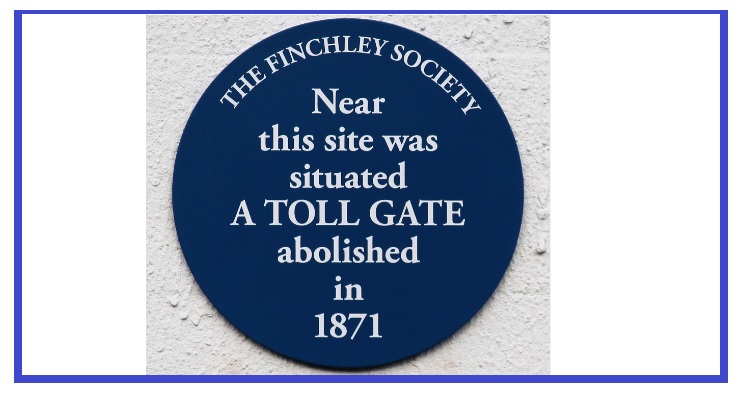Finchley’s Toll Gate

At first sight, I have to confess, the latest in lime in our quest to celebrate Finchley’s Blue Plaque honourees did not appear to be very illuminating.
But as the old saying dictates: “If at first you don’t succeed, try, try again…” I’m glad I followed that old adage because the subject of Finchley’s Toll Gate was more illuminating than first appeared.
So in time honoured story telling fashion, let’s start at the very beginning:
In 1826 an act of parliament allowed the construction of a new turnpike between Marylebone and Finchley – known as Regents Park Road – which meant travellers had to pay to use the road.
On reaching Finchley the road followed the same route of the old Ballards Lane, so named in 1424. The new turnpike was not completed until 1829. This replaced the old lane called Ducksetters Lane which had connected Finchley and Temple Fortune since 1475.
Ducksetters Lane was closed after the turnpike was opened and the toll gate was positioned at the junction of Ballards Lane and Nether Street.
Locals continued to use the old lane but now had to buy tickets to use their own thoroughfare. Protesters ensured that the gate was moved further down East End Road.
The Finchley Society installed a blue plaque commemorating the tollgate at the Queens Head Public House, situated at the start of East End Road.
Sadly, only two of the fine houses erected in Ballards Lane during the 18th and 19th century remain: Grove Lodge in Regents Park Road and Cornwall House, which serves as a doctor’s surgery in Cornwall Avenue.
— Lynn Radnedge
